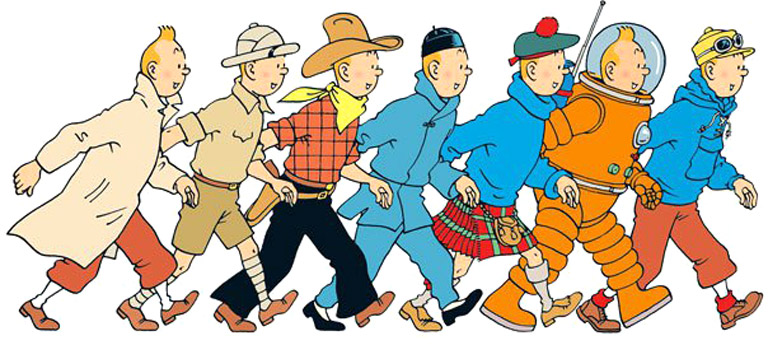
Comic strips offer even more opportunities for working with the symbolism of direction. W.A. Wagenaar, a psychologist at Leiden University and a Tintin fan, once tallied up all the acts and transitions in three Tintin books and discovered that in three out of four cases the characters move from left to right, even when their movement takes several frames to portray. More interestingly still, movements towards the left almost always have a bad outcome. The man who moves his finger from right to left to ring Tintin’s doorbell falls unconscious on the doormat as soon as the alert reporter opens the door. When Captain Haddock crosses the frame from right to left in an attempt to escape, he is recaptured in no time. And so on. This is Tintin’s Law, and it is reminiscent of the messenger in the theatre of the ancient world: entering on the right — and therefore moving towards the left — is a sign to the audience that something ominous is happening.
— Rik Smits, The Puzzle of Left-Handedness, 2010
(Wagenaar’s paper is “Als Kuifje naar links beweegt is er iets mis,” NRC Handelsblad, Aug. 5, 1981.)
